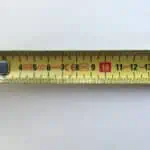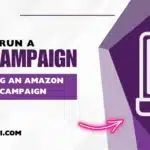What you’ll learn
If the thought of starting your own business on Amazon has ever crossed your mind, you must know all the associated fees payable by sellers to remain in business. If there’s one thing that often confuses new sellers and sometimes seasoned sellers – it is the list of fees payable by sellers to remain in business. The cost of selling on Amazon varies based on the inventory you send to Amazon for people to buy.
Note: We also have an updated Amazon restocking fee guide you can check out.
To successfully sell on the Amazon Marketplace, you must understand what makes up all the selling costs and the steps you can take to save money the most.
Ahead, I have broken down all the Amazon seller fees expected of you to pay as you look to start an Amazon business.
Let’s dive in!
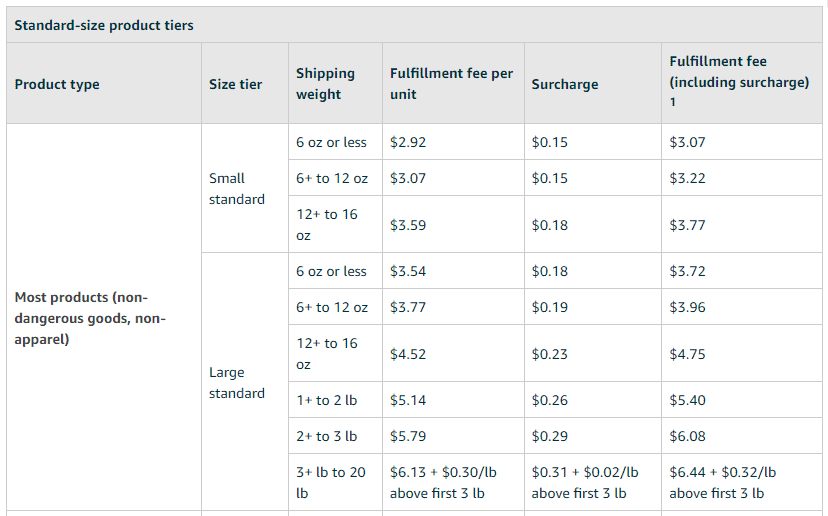
Basics of what it costs to sell on Amazon
#1. Monthly subscription fees
When you start your Amazon business, one of the first Amazon seller fees is the monthly subscription fee. This fee gives you access to the Amazon marketplace. Depending on how much you plan to grow, you can choose either a professional or a cheap individual account, which will make a massive difference in functionality and final fees paid down the road.
The entire selling on Amazon fee schedule can be found on seller central.
Professional Amazon seller monthly fee is $39.99. The plan includes the ability to:
- Not pay a fee per item sold, unlike individual account holders
- Use spreadsheets, feeds to upload, and download reports to manage your order and inventory
- Access to Amazon Marketplace Web Services API, the new SP API, advertising API
- Better chance of winning the listing Buy Box
- You will be able to add taxes to your listings and sales
- Set your shipping rates and plans
- Run special promotions to promote your listings
- Get access to brand registry services
- Download and use detailed analytical tools and reports for your seller account.
Using a professional account isn’t worth if it you sell less than 40 items a month on Amazon because with the individual plan, you pay a fee of $0.99 for each item sold.
If you do the math, you pay more for the professional plan than an individual plan for selling fewer items.
Things to watch out for with the individual seller account:
- No monthly subscription fee
- Amazon sets all shipping rates
- Must upload inventory manually instead of in bulk
- No special services like gift-wrapping
- Exclusion from some product categories like Jewelry, Art, Food, Luggage, and Handbags
- No access to APIs, which helps when Amazon Seller Central goes down
- Limited access to certain features in seller central
#2. Product sale related fees
The biggest fees and costs associated with selling on Amazon are the Amazon selling fees.
Check out our monster seller fees guide for a complete detailed list of every Amazon fee and an explanation of what each means.
Referral fees
The referral fee is the commission Amazon charges you for using their marketplace to sell your inventory, and it’s a big cost to sell on Amazon.
The referral fee is 15% for most product categories. Others, like Protection Plans and Service contract category or the Extended Warranties category, expect to pay about 96% of your sale as the referral fee.
es vary by category, as listed below. Prior approval may be required to offer products in the categories listed in Categories and products that require approval.
Amazon deducts the greater of the applicable referral fee percentage or applicable per-item minimum referral fee.
| Category | Referral fee percentages | Min referral fee |
| Amazon Device Accessories | 45% | $0.30 |
| Amazon Explore | 30% for Experiences | $2.00 |
| Baby Products (excluding Baby Apparel) | 8% for products with a total sales price of $10.00 or less, and15% for products with a total sales price greater than $10.00 | $0.30 |
| Books (including Collectible Books) | 15% | — |
| Camera and Photo1 | 8% | $0.30 |
| Cell Phone Devices2 | 8% | $0.30 |
| Consumer Electronics | 8% | $0.30 |
| Electronics Accessories | 15% for the portion of the total sales price up to $100.00, and8% for any portion of the total sales price greater than $100.00 | $0.30 |
| Furniture (including outdoor furniture) | 15% for the portion of the total sales price up to $200.00, and10% for any portion of the total sales price greater than $200.00 | $0.30 |
| Home & Garden | 15% | $0.30 |
| Kitchen | 15% | $0.30 |
| Full-Size Appliances | 8% | $0.30 |
| Compact Appliances (including parts and accessories) | 15% for the portion of the total sales price up to $300.00, and8% for any portion of the total sales price greater than $300.00 | $0.30 |
| Lawn Mowers & Snow Throwers | 15% for products with a total sales price of up to $500.008% for products with a total sales price greater than $500.00 | $0.30 |
| Mattresses | 15% | $0.30 |
| Music | 15% | — |
| Musical Instruments | 15% | $0.30 |
| Office Products | 15% | $0.30 |
| Outdoors | 15% | $0.30 |
| Personal Computers | 8% | $0.30 |
| Pet Supplies | 15%, except 22% for veterinary diets | $0.30 |
| Software & Computer/Video Games | 15% | — |
| Sports (excluding Sports Collectibles) | 15% | $0.30 |
| Tools & Home Improvement | 15%, except 12% for base equipment power tools | $0.30 |
| Toys & Games3 | 15% | $0.30 |
| Video & DVD | 15% | — |
| Video Game Consoles | 8% | $0.30 |
| Everything Else4 | 15% | $0.30 |
| Categories requiring approval | Referral fee percentages | $0.30 |
| 3D Printed Products | 12% | $0.30 |
| Automotive & Powersports | 12%, except 10% for tires and wheel products | $0.30 |
| Beauty | 8% for products with a total sales price of $10.00 or less, and15% for items with a total sales price greater than $10.00 | $0.30 |
| Clothing & Accessories (including activewear) | 17% | $0.30 |
| Collectible Books | 15% | — |
| Collectible Coins | 15% for the portion of the total sales price up to $250.00,10% for any portion of the total sales price greater than $250.00 up to $1,000.00, and6% for any portion of the total sales price greater than $1,000.00. | $0.30 |
| Entertainment Collectibles | 20% for the portion of total sales price up to $100.00,10% for the portion of total sales price greater than $100.00, up to $1,000.00, and6% for the portion of total sales price greater than $1,000.00 | — |
| Fine Art | 20% for the portion of the total sales price up to $100.00,15% for the portion of the total sales price greater than $100.00 up to $1,000.00,10% for the portion of the total sales price greater than $1,000.00 up to $5,000.00, and5% for the portion of the total sales price greater than $5,000.00 | — |
| Gift Cards | 20% | — |
| Grocery & Gourmet Food | 8% for products with a total sales price of $15.00 or less, and15% for products with a total sales price greater than $15.00 | — |
| Health & Personal Care (including Personal Care Appliances) | 8% for products with a total sales price of $10.00 or less, and15% for items with a total sales price greater than $10.00 | $0.30 |
| Industrial & Scientific (including Food Service and Janitorial & Sanitation) | 12% | $0.30 |
| Jewelry | 20% for the portion of the total sales price up to $250.00, and5% for any portion of the total sales price greater than $250.00 | $0.30 |
| Luggage & Travel Accessories | 15% | $0.30 |
| Shoes, Handbags & Sunglasses | 15% | $0.30 |
| Sports Collectibles | 15% for the portion of the total sales price up to $100.0010% for any portion of the total sales price greater than $100.00 up to $1,000.006% for any portion of the total sales price greater than $1,000.00 | — |
| Watches | 16% for the portion of the total sales price up to $1,500.00, and3% for any portion of the total sales price greater than $1,500.00 | $0.30 |
Other product categories, with the exception of Amazon device accessories, are not as high as these two.
There are exceptions when there is no applicable minimum referral fee, like entertainment collectibles, collectible books, gift cards, fine arts, grocery and gourmet food, Extended Warranties, and music.
Some product categories have a different schedule of referral fees in cases where the fee percentages are computed based on dollar sales.
For example, in Sports Collectibles, you will pay a 20% referral fee when the total sales are less than or equal to $100 and 10% when the sales are between $100 and $1,000. Keep in mind that more than half of Amazon’s product categories behave this way when it comes to referral fees.
Variable closing fees
Expect to pay the extra $1.80 variable closing fee if you sell in the Media category (computer games, software, video games, BMVD, and video game consoles, among others).
Refund administration fee
Customers love Amazon because they can return products as they please. You are refunded the referral fee, but Amazon will charge you an applicable refund administration fee where applicable. The cost of this fee can be around 20% or $5 of the referral fee depending on the cost of the product and category.
3. FBA fees
Amazon expects you to know ALL the different Amazon selling fees – but there are so many.
Here are the most important related to FBA.
Order fulfillment fees
The point of selling on Amazon is to use their FBA program. Where Amazon handles all the fulfillment for you. But it’s also a hefty cost to factor into your margins.
Amazon will charge you a fee based on the dimensional weight of the product. The bigger and heavier, the more you pay.
Similarly, the lower the size and weight, the lower the order fulfillment fee. For instance, if your product is 6 ounces or less, expect to pay $3.07.
For 151 pounds products or higher, it will cost $158.49 + $0.83/lb above the first 90 lb.
The pricing changes all the time so you have to keep up with the FBA fulfillment fee changes.

Monthly inventory storage fees
Another important cost to sell on Amazon is the monthly storage fees. This fee pays to use Amazon’s fulfillment centers across the country (or world) to store and fulfill your inventory.
The monthly storage fee is around $0.83 per cubic foot between January and September and $2.40 per cubic foot between October and December.
If you store oversized inventories, the storage fee drops to $0.53/cubic foot and $1.20/cubic foot.

Lastly, here comes the long-term storage fees. This fee is charged when you cannot sell your inventory quickly from the fulfillment center and hasn’t moved for 365 days.
The extra fee is charged after 12 months of continuous storage.
One quick tip: use our FBA fee calculator spreadsheet to figure out your FBA fees.
Want more advanced Amazon tactics to boost sales?
Be the first to know when a new guide is published and how we are implementing it into our business.
4. FBM fees
Fulfilled by Merchant (where you handle your product shipping) is less expensive than FBA.
Amazon understands that FBM sellers are responsible for their shipping costs and that’s why the fee you pay is only the referral fee. Not the FBA or other seller central fees.
FBM sellers with an individual seller account have no option but to use the Amazon shipping rates, even if the rate is higher than the total shipping costs.
Here’s how Amazon puts it.
Sellers with the Individual plan use Amazon’s set shipping rates for all products. Individual sellers have to ship orders at the set rates even if the shipping credit is less than total shipping costs, so it’s important to price items in a way that makes sure you’ll earn a profit.
– Amazon.com pricing page
It is important to price or negotiate your product prices carefully and aggressively so that Amazon rates will not “eat” deep into your potential profit.
However, if you plan to use the Amazon professional selling plan, you will enjoy more flexibility as you will get to choose your shipping rates. But there is only one exception to this arrangement, and that’s if you plan to sell in the BMVD (Books, Music, Video and DVD) category.
Amazon usually gives a shipping credit that matches the shipping rates. The shipping credit varies depending on the method of shipping (international standard, domestic two-day, international expedited, domestic expedited, and domestic standard).
5. Miscellaneous fees
There are still other costs to sell on Amazon. With over 150 different types of fees and charges, the cost of doing business is steep.
- If you have more than 100,000 products listed on the Amazon platform, the high-volume listing fee applies. Then, you will also pay a monthly flat fee of $0.005 for every eligible item in your inventory. You will pay this fee simultaneously as your FBA storage fees.
- A higher FBA fee for dangerous goods exists. 6 oz or less is $4.04 compared to $3.85 for standard FBA. Dangerous goods costs have been going up over the years.
- Amazon charges $5.00 if you sell textbook rentals. This amount is charged at the time of the sale.
- FBA sellers ship their inventory to an Amazon warehouse, and from there, Amazon employees handle the fulfillment method. Most sellers put their items in boxes before sending them to the Amazon warehouse. Amazon still uses boxes to send out the items to customers. So, if you want this service, be ready to pay $0.15/unit for November to December and $0.10 for the rest of the year.
- When customers or buyers return items to Amazon, the original box is likely not to be in a good condition, or they may decide to use a new box different from the original box. If this happens, Amazon will charge you a service fee to help you repackage the product. Highly recommend NOT to use this service. Turn it off in your account.
- There’s an Amazon category known as “Refurbished” or “Renewed by Amazon”“.
- The greatest benefit of the FBA program is that Amazon will handle most of the things for you, including product packaging and labeling. However, this gesture comes at a cost of between $0.50 and $1.20 per standard size unit. Where possible, always have your supplier do all the labeling or do it in-house.
- Lastly, Amazon charges $0.30 per unit to apply barcodes on your inventory at their fulfillment center.
Examples of how much does it cost to sell on Amazon

Selling books on Amazon example
Professional Selling Plan example:
$20 book
– 15% Referral fee
– Closing fee of $1.80
= $15.20 to your account
But from here, you have to subtract
- the cost of the book
- the cost to ship it to Amazon’s fulfillment center
- packing materials
- labor costs
So if the assumption is:
- you found the book for $3
- it cost $0.50 per book to ship to Amazon
- the packing materials is $0.10
- labor cost per book is about $0.25
then your final gross profit will be $11.35 which is a 57% gross margin.
And then from here, if you are going to pay someone to create nice images for your listing, take photos, spend money on PPC, and factor in returns, fraud, and bouncing mailing addresses, you can see the cost of selling on Amazon start to go up quickly.
These are the little things that most new sellers don’t think about and only ask the basic question of how much does it cost to sell on Amazon.
To help you figure out your numbers use the following:
- Official Amazon calculator
- Our free Amazon profit calculator spreadsheet
- Our free Amazon revenue forecaster to simulate your growth
How much money do you need to get started selling on Amazon?
Depending on your strategy, getting started on the Amazon marketplace can cost anywhere from $100 to $10,000.
Reselling regular branded products you can find from Target is cheap. Creating your own brand, mold, or product is expensive.
Finding and reselling used books is also super cheap to get started. Let’s go through another example of selling books on Amazon.
| Selling Books Example | ||
| Units sold | 1 | 100 |
| Avg Sales Price | $15 | $15 |
| Total Sales | $15 | $1,500 |
| 15% referral | $2.25 | $225.00 |
| Closing fee | $1.80 | $180.00 |
| Avg Inventory cost | $3 | $3 |
| Total Inventory cost | $3 | $300 |
| Barcode labels | $0.01 | $1.00 |
| Labor | $0.50 | $50.00 |
| Packing materials | $0.25 | $25.00 |
| Shipping to Amazon | $0.50 | $50.00 |
| Gross Profit | $6.69 | $669.00 |
| Gross Margin | 45% | 45% |
Here’s a spreadsheet version if you find it easier.
Now to get more advanced details and a better understanding of the potential sales and simulate your sales, you can use our forecasting calculator to input assumptions like:
- number of sessions to your listing
- conversion rate
- sales growth
It will then show you the business potential of selling on Amazon. In this example, even if you grow at $500/month, by the end of the year you could be generating sales of $231,000.

Inventory costs
Inventory costs are significant for your Amazon business. If you’re new to Amazon, I suggest you don’t spend so much on inventory. Reordering is better than sitting on inventory that does not sell.
Product photoshoots
Having stunning and quality photos of your inventory is essential to getting customers’ attention and driving sales. You should allocate a part of your budget to professional photoshoots so that your products can stand out from the crowd. Remember that your photos must showcase different aspects of your products from different angles. Using low-quality images will lower your conversions and reduce listing optimization.
Advertising costs
Amazon is now pay to play. Product images won’t be enough without visibility and SEO. You must use Amazon PPC and include this cost factor in selling on Amazon.
Advertising on Amazon is still affordable because of the high traffic and conversions. Expect to spend about 33% of your sales price on advertising.
7 ways to save money on Amazon seller costs
For new sellers, you can see that the fee charged by Amazon to put up your inventory for sale can quickly add up. But there are a few strategies you can use to minimize costs and save money. The following are some of the ways you can save money on Amazon seller costs:
#1. Use a Professional seller account
One of the best ways to save money on Amazon seller costs is to get a professional seller account. This is a no-brainer. A tiny cost of doing business on Amazon.
#2. Choose the right product category
Amazon product category plays a critical role in the fee sellers pay as referral fees. Choose the right product category so you don’t spend more than you budgeted.
For example, if you sell necklaces and you list them in the “Jewelry” category, the referral fee is around 20% for this category. However, if you list your necklaces in the “Apparel Accessories” category, the referral fee is around 17% instead.
#3. Estimate the right product size
Putting up heavy inventory on Amazon comes at a heavy price. Make sure you correctly estimate your product size so that you don’t end up paying for mass that doesn’t exist. Always double-check product dimensions before shipping procedures. In fact, to save extra money, invest in lightweight packaging to help reduce inventory’s weight.
#4. Partner up with a 3PL
It can be a time-consuming process to handle your shipping manually yourself. You should outsource your Amazon shipping to a 3rd party logistic (3PL) company to be on top of your game. Outsourcing your Amazon shipping and inventory management to a third-party provider will allow you to focus on growth instead of dealing with people issues if you try to hire internally.
#5. Keep track of any abandoned inventory
As an Amazon FBA subscriber, when you leave your inventory stranded for too long, Amazon will impose extra warehousing fees on you. In fact, this could make you lose storage space in the warehouse. To avoid this kind of extra charge, make sure you review your inventory each quarter. Take out any inventory that you didn’t sell within six months.
#6. Invest in free packaging material
A great way to cut costs as a seller on Amazon is to recycle boxes instead of buying new ones, and this can save you thousands of dollars in the long run. This strategy will save some bucks, but it’s also better for mother nature. Best for new Amazon sellers who are looking to lower the cost to sell on Amazon via every method.
#7. Negotiate with your carriers
Another way to save money on Amazon seller costs is to negotiate with your carriers. If you regularly do business with carriers like UPS or FedEx, you can reach out to the company to get the best deal on shipping. You can request a discount when shipping certain order volumes.
Stop losing money on Amazon selling costs today
It is important to understand Amazon seller fee before putting up your products for sale on the Amazon marketplace. This will help you know how to correctly price your inventory. To win a share of Amazon BuyBoy and stay competitive 24/7 on Amazon, you can deploy a repricing tool to take care of your pricing strategy. Using a repricing tool will free up time for you to spend on other areas of your business.
The knowledge of the five different fee categories that you have learned in this post will equip you to find better profitable products to sell in this ever-busy and ever-growing marketplace.
Frequently Asked Questions
What is the true cost of selling on Amazon?
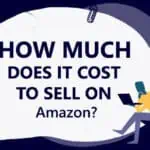
With over 150 different fee types, every seller is slightly different. However, the bulk of your costs will be the referral fee and fulfillment costs if you use FBA. It can range from 15% to 25% of the sales price.
How much does it cost to sell books on Amazon?
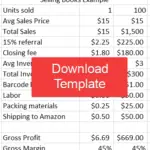
The sales price minus 15% Referral fee minus closing fee of $1.80 is the final amount deposited to your account.
How much does it cost to sell on Amazon as an individual?
It starts at $0.99 per item sold. The individual plan does not have a monthly charge, but the extra $0.99 fee is attached to every sale.
Is it cheap to sell on Amazon?
It is not all that cheap to sell on Amazon considering all the fees and charges involved at different stages on the market. However, the marketplace is promising and very profitable if you play your card well.
What percent does Amazon take?
Amazon charges you for every item you sell through their platform. The fee ranges between 6% and 45%. But, if you plan to sell media products, the percentage is around 15% of the total sales price.
Is selling on Amazon free?
No, it’s not free. There are so many fee categories to keep in mind, including referral fee, when looking to put up your inventory for sale on Amazon. However, creating a seller account is absolutely free of charge.
Comments
Related Posts

10 Profitable Product Categories for Amazon Affiliates 2025
What you’ll learn Amazon is a favorite for experienced and…

Unlock the Secret to a Profitable Automated Amazon Store: How to Build a Hands-Free Income Stream
Ever dreamed of running a profitable Amazon business while sipping…

Master Amazon New Restricted Keywords: A Seller’s Guide to Success
Changes to Amazon’s restricted keywords list have taken a lot…

